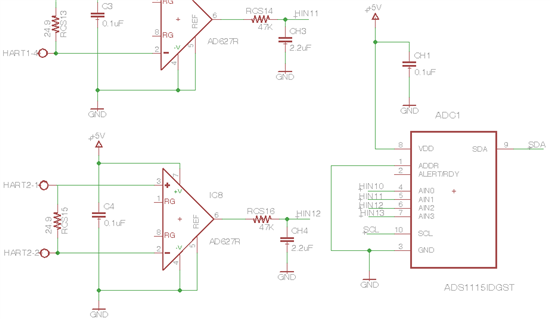I would like to hear opinion about using Current Shunt Monitors like INA3221 (triple channel I2C CSM) to read three 4-20mA sensors. Especially in regard to the filtering of the digital HART signal that is modulated on the same loop. Could that be done using the averaging function?
In the IC page it is stated that this IC is "Low-side Capable" while in the datasheet this hasn't been mentioned. Will this be a factor in the design?



